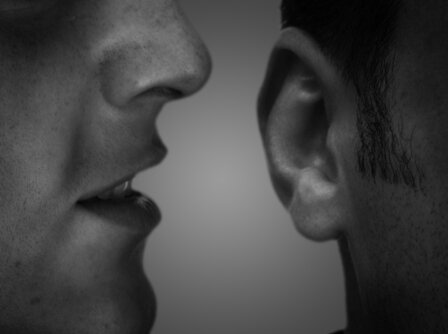Top 10 Universal Languages
Suggested by SMSThough there are hundreds of languages and dialects throughout the world, there are some languages that, no matter what your latitude and longitude point is, you’ll understand them – no translation needed. Whether it is a physical language, such as sign language – or one of the arts, universal languages transcend international boundaries and are able to reach people around the globe. These 10 universal languages are easily understood and interpreted no matter what part of the world you are from.
10. Mathematics
Math is one of the world’s oldest languages, dating back to 50,000 B.C., when archeological evidence shows that early man knew how to count and keep track of items in a numerical value. By 25,000 B.C. there was evidence of geometrical designs. Ancient Egyptians furthered mathematics into a more sophisticated system of adding, multiplying and subtracting, while the ancient Greeks began developing modern day mathematical theories. From algebra to geometry to trigonometry and calculus – the whole world uses the same mathematical system. No matter what language one speaks, math in every country and continent is the same. Theories and formulas do not vary from country to country as language does, making mathematics the most concrete universal language – one that is based on rules and leave little room for interpretation. Math’s global reach was explored in the famous 1960 essay “The Unreasonable Effectiveness of Mathematics in Natural Science” by Nobel Prize-winning physicist Eugene Wigner, in which he calls mathematics “the only true universal language.”
9. Morse code

How did people communicate across the airwaves before television and radio? A language called Morse Code, which is a form of communication composed of on and off tones, lights and clicks. All you need to decipher Morse Code is a knowledge of the language and a good set of ears. Morse Code was first created in the early 1940s by Alfred Vail, for use in Samuel Morse’s electric telegraph. Morse Code was later used to transmit communication over the radio before voice transmission was possible. The early version of Morse Code has transformed into what we now know as The International Morse Code, a universally understood code that encodes the Roman alphabet, Arabic numerals, punctuation and procedural signals. All alphabetical and numerical communication is represented by sequences of alternating short and long signals known as dots and dashes, which make a sound similar to “dit” and “dah”. Since numerous non-English languages have more letters than the standard 26 letter Roman alphabet, many extensions to the Morse alphabet exist, making it a universal language. Though it has been around for more than 150 years, Morse Code is still used in many modern day communications, such as in aeronautical navigational aids. It also remains popular with amateur radio operators across the globe. Morse Code can also be used in emergency situations, where no other communication is available, making it not only universally understood, but useful throughout the world.
8. Body Language

Whether it is a flirty glance from across a crowded room or a stand-offish stance when someone feels threatened, body language is one language that needs little interpretation. Body language is the unspoken, often subconscious, language that our movements and bodies create, giving away our emotions and feeling. Unlike the spoken word, body language creates visual cues that are easily recognizable in any part of the world. Think for example of a woman standing in two different positions. In one, she has her arms loose and relaxed, with a pleasant expression on her face. No matter what your native tongue, it would be easy to interpret that this woman is happy and content. Take the same woman and imagine her with crossed arms and a scowl. It would be easy to assume that she is upset or angry. According to body language expert Dr. Lillian Glass, body language is not only universal in nature, but can often give away a person’s true intention, revealing more than the spoken word ever can.
7. Binary Code

Just two numbers, 0 and 1, are all that is needed to create the complicated mathematical and computer programming language known as binary code. Using combinations of 0 and 1, binary code can represent any amount you wish, using only two digits. For example, decimal 1 is binary 0001, decimal 3 is binary 0011, decimal 6 is binary 0110, decimal 9 is binary 1001 and so on. Binary code is used by mathematicians and also by computer programmers to deliver instructions to the computer’s processor. The binary number system was first invented in1679 by German mathematician Gottfried Leibniz. The modern day binary code, which is used for computer programming, was developed in the mid-20th century by American mathematician and engineer Claude Shannon. In addition to numerical binary code, the American Standard Code for Information Interchange (ASCII) uses 0 and 1 to represent alphabetical characters which are used as text in computers and other communication devices that use text. Since 0 and 1 are numbers that are used throughout the world, as the same mathematic rules apply to all languages, binary code is a universal language.
6. HTML

HTML, which stands for HyperText Markup Language, is the “behind the scenes” language that makes up everything you see in front of you on your computer screen when you surf the web. Every time you visit a web page, whether you are in the United States or the United Arab Emirates, you are reading HTML language, which is the building block of most web pages. HTML language, also known as HTML coding, was developed by British programmer Tim Berners-Lee in 1991 and changed the face of computers as we know it by creating the basis for Internet programming and the World Wide Web. HTML is written in the form of “tags,” which are various coded letters enclosed by angle brackets, such as . These tags help create text, images and interactive media content on web sites and are “read” by the computer to allow it to perform the desired function or display the desired image on a web page. HTML is a universal language, as it is used throughout the world and is independent of language and dialect.
5. Baby Language

There’s one sound that is very unmistakable no matter where you are in the world: a baby’s cry. According to Dunstan Baby Language, a system to decipher cries developed by famous opera singer Priscilla Dunstan, all babies – no matter where in the world they were born – have similar vocalizations in the first months of life. Crying patterns and sounds are similar in all babies, whether they were born in America or Zimbabwe. Dunstan, whose research has been scientifically proven by several major university studies, claims that all babies make similar distinctive cries when distressed, hungry, sleepy or angry. They also make similar coos, gurgles and laughs to express happiness and contentment. Difference in baby communication does not start becoming noticeable until the infant begins picking up vowel sounds that are distinctive to their parent’s native tongue. Babies can begin making distinctive vowel sounds beginning at six months old. In addition to making similar sounds, it has also been noted that babies seem to recognize facial expressions and tones – and can determine whether an adult is happy or angry – no matter what the language spoken.
4. Music

For thousands of years, humans have enjoyed music – and whether you are taking in a rock concert at a huge stadium, or are a part of a tribal drumming circle, music has a universal appeal that transcends language. Music has long been a touchstone of human culture and is used both to entertain and communicate. Regardless of a person’s native tongue, music is universal for several reasons. First, the musical notations are the same in every language. Sheet music is universally created and read by composers and musicians across the globe. The basis of modern day sheet music, which uses a system of dots and lines to create notes, keys and scales, was developed in Europe beginning in the late 1300s. This musical language is still in use today. The other reason music is a universal language is its ability to overcome language barriers to elicit emotion and enjoyment from the listener, no matter what their native tongue. According to a recent experiment by Thomas Fritz of the Max-Planck-Institute for Human Cognitive and Brain Sciences, modern day pop songs were played to African tribal members who had never been exposed to popular Western music and who do not speak English. Tribe members were able to determine which songs were happy, sad or angry, based on the composition of the music. Fritz determined that music is something that can be understood by all cultures and nationalities.
3. Art

Imagine a typical scene at the Louvre, the world’s most visited art museum located in Paris, France. Thousands of people flock to the museum each day – and they come from all over the globe: France, United States, Japan, South America or Germany. Though the museum-goers may all speak a completely different language, they can all appreciate and react to the art they are viewing, without the need for interpretation. Leonardo Da Vinci’s painting “The Mona Lisa,” for example is enjoyed by millions of admirers from all over the world each year. Because art is a visual medium, it needs no language to get its point across. Since the Neolithic days, when cave paintings were used to communicate messages and record history, art has been a part of all societies. Some art, such as cave paintings or Medieval-era portraits, were used for practical reasons. As society progressed, art began being used as a form of creative expression, beautification and entertainment. Art is so universal, that throughout time particular art movements – such as Impressionism and Pop Art – have begun in one country and created influences that have traveled across the ocean. Russian author Leo Tolstoy explored the universal nature of art in his famous 1896 tome “What is Art?” in which he notes that art is universal because it expresses thoughts and feelings which can be experienced by every human being. Since color, light, texture and shape are easily recognized by people of all cultures, art speaks to people on a global level.
2. Dance

The language of movement is something that every culture can understand, and in each nationality or culture, dance has long been an important part of society. Whether it is the elegance and grace of a beautiful ballet performance or the energy and excitement of hip hop dancing, modern day cultures use dance as a way to entertain and express emotion. The origins of dance began in prehistoric times, where dance was used as a way to communicate and also played a role in the development of rituals, which were important in establishing societal roles and values. Today, many South American, Aboriginal and African tribes use dance as a way to communicate and as a part of religious ritual. In the Western world, dance is primarily used for entertainment. Watching a dance performance or going out dancing are common forms of entertainment. Since dance requires no spoken language, it is easily interpreted by all nationalities. Though there are thousands of dances and dance styles that vary from culture to culture, anyone can appreciate the movement, rhythm and meaning behind dance, no interpreter needed. As famous choreographer Martha Graham once said: “Dance is the hidden language of the soul,” and it is language that needs no interpreter.
1. Symbols

Before man had written language, he had symbols – such as those found in prehistoric cave paintings. Symbols signified an idea or an object and were used as a simple, yet effective way to communicate. Even though we now live in a world that is home to hundreds of sophisticated written and spoken languages, symbols are still a major part of our daily communication. We use symbols each and every day, often without realizing it. Think of an average day. Driving to work, you stop at red lights and stop signs. Walking the street, you use a walking symbol to know when it is okay to cross at a crosswalk. When finding a restroom, you know which one to enter by the telltale male or female symbol. Throughout most countries, symbols are very similar and can be easily read, no matter what language you speak. Symbols are so universal and easily understood that studies conducted with chimpanzees by Yale University’s Laboratories of Primate Biology shows that primates are capable of recognizing and deciphering simple symbols commonly used by man.











very informative!